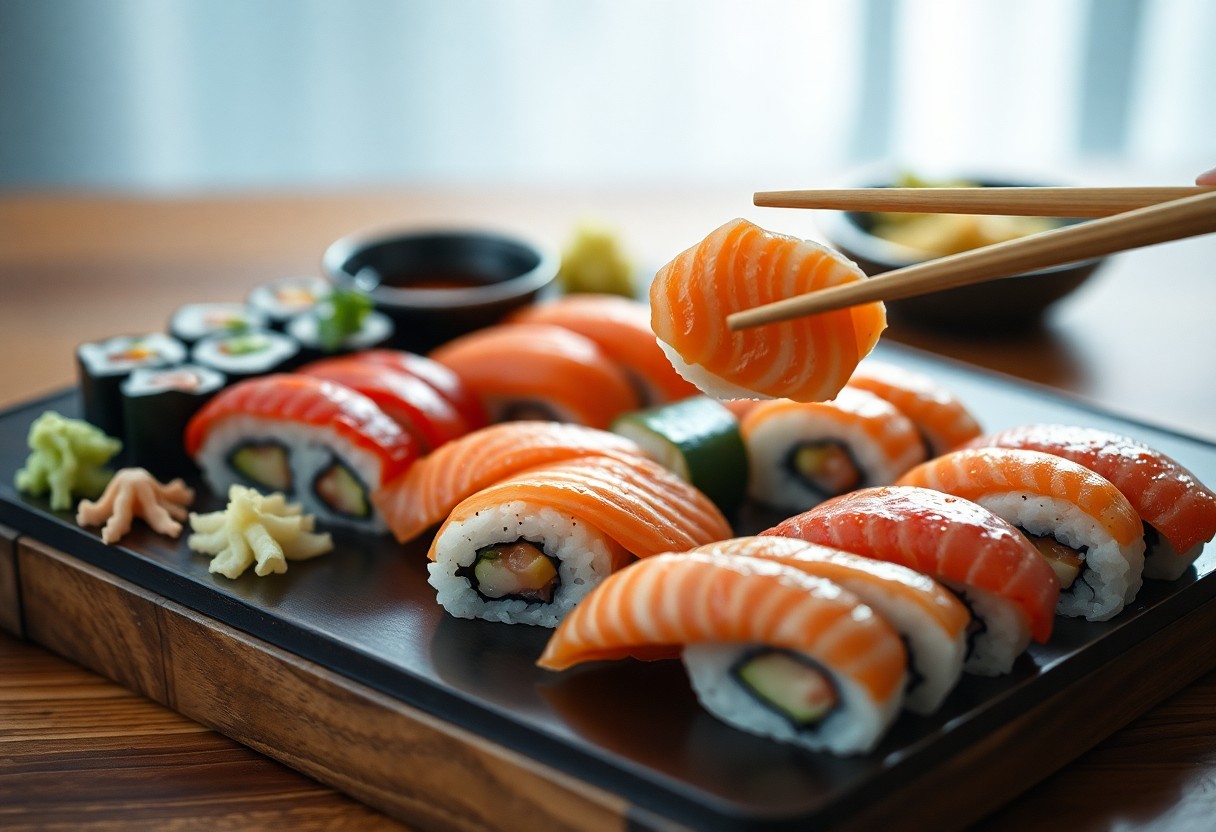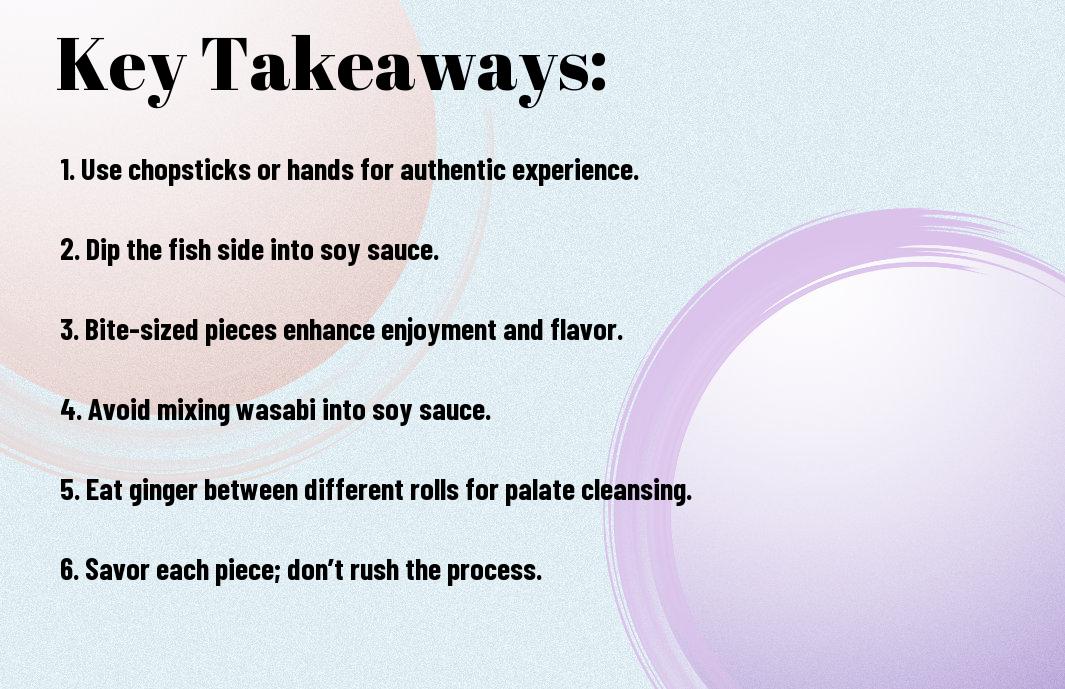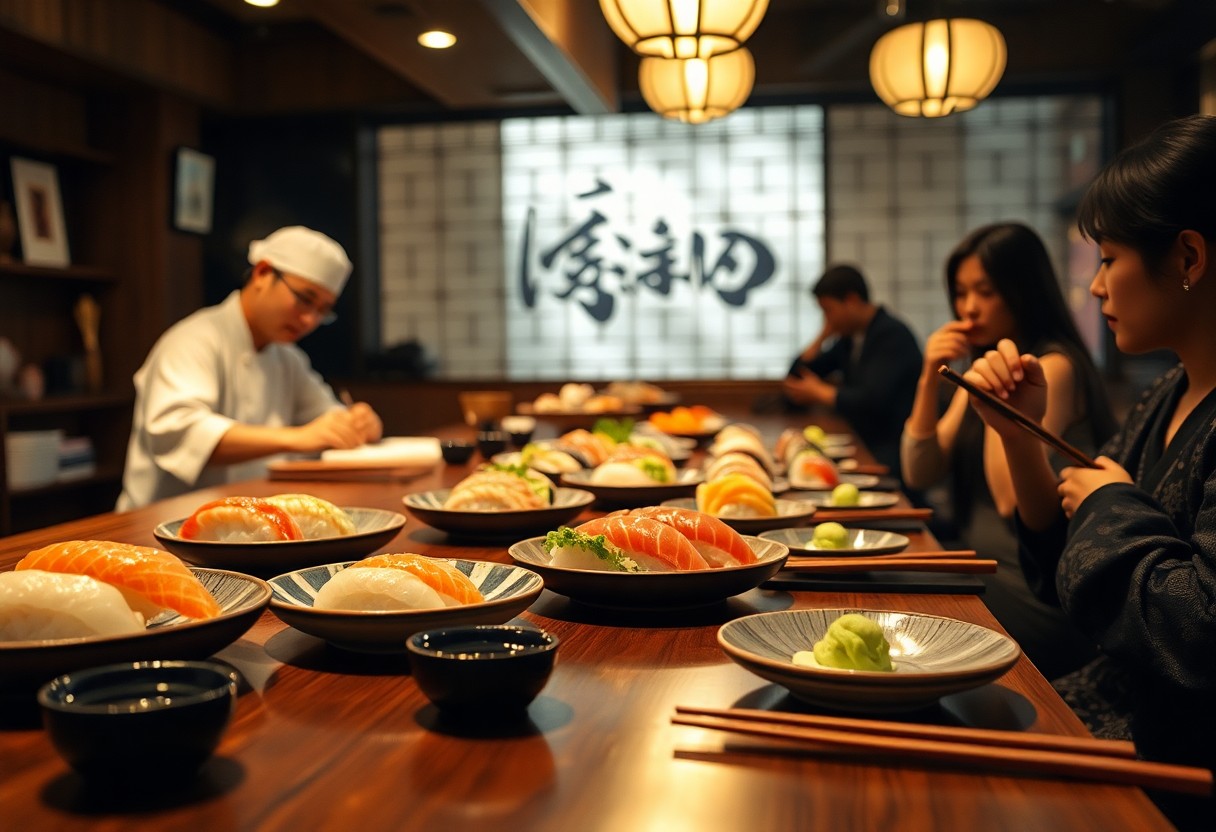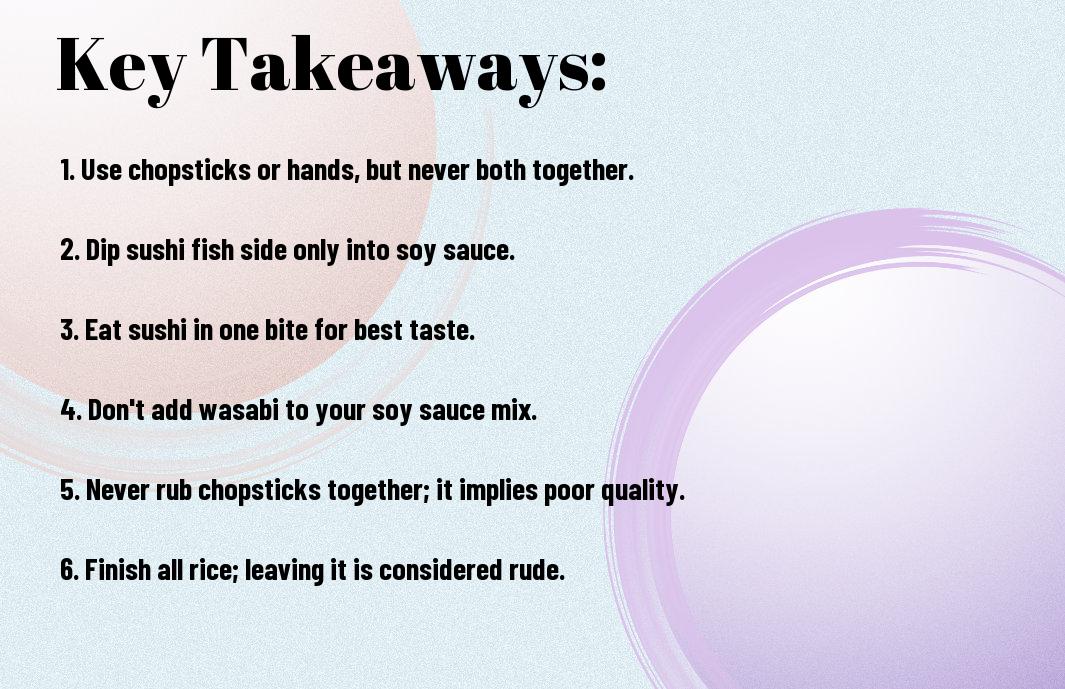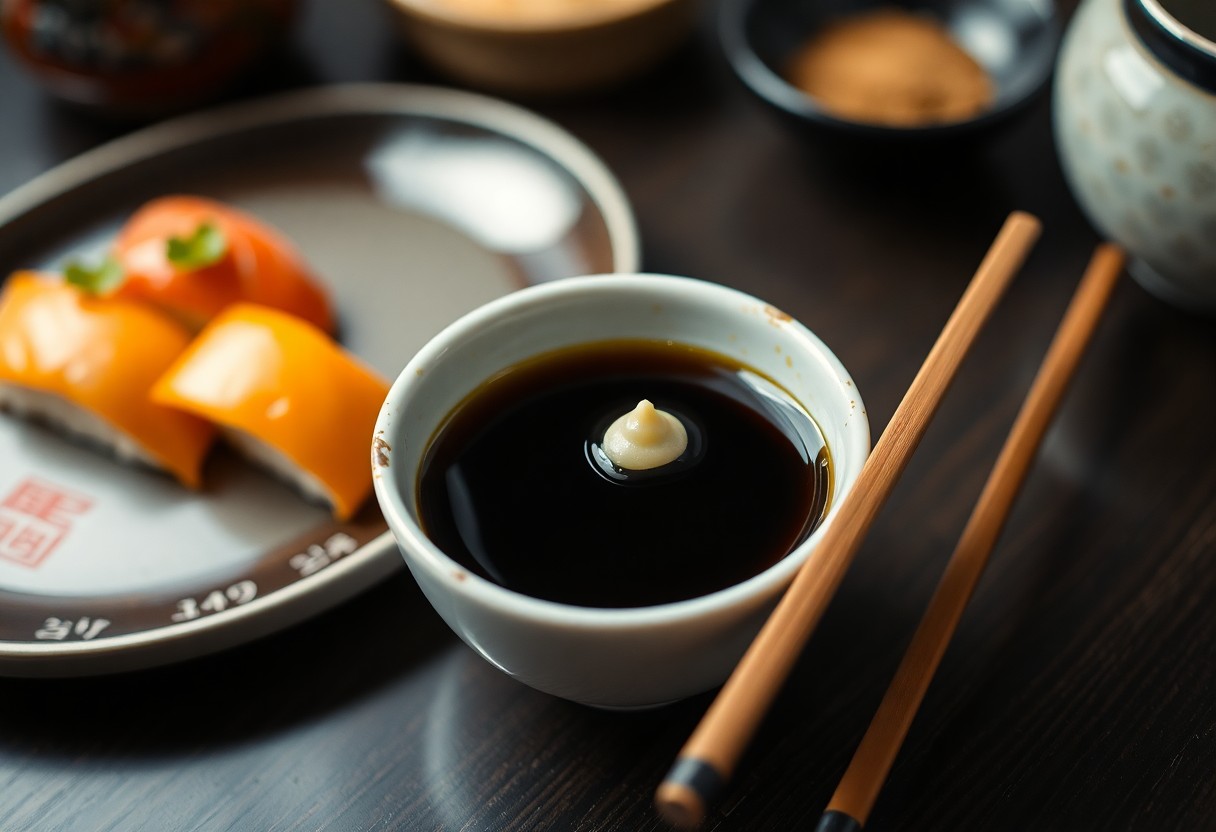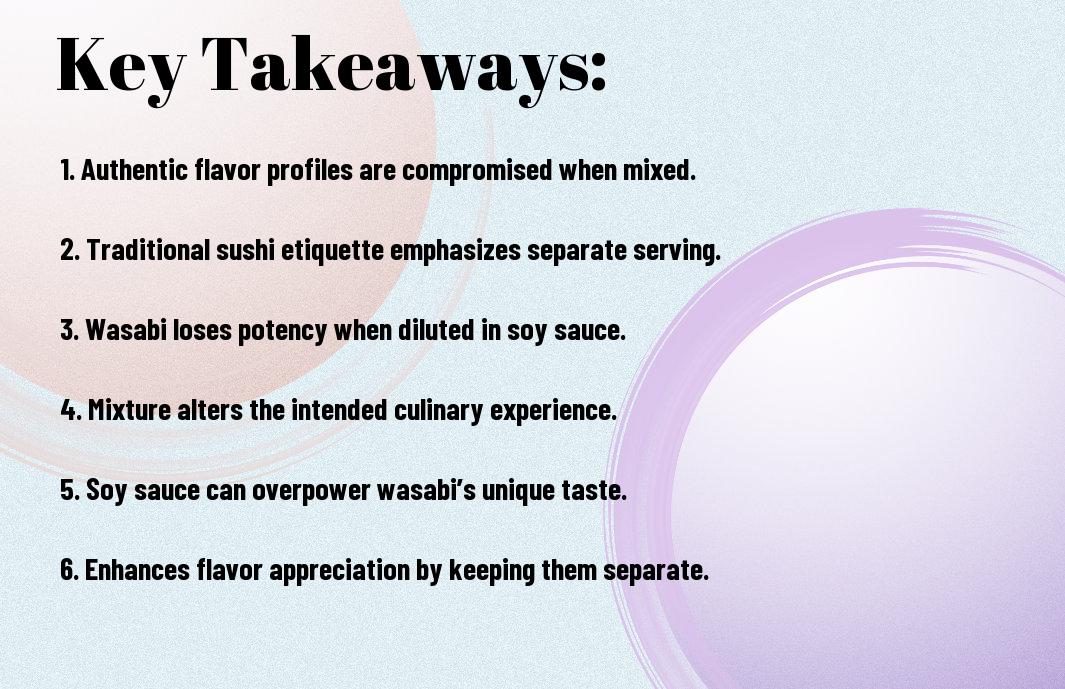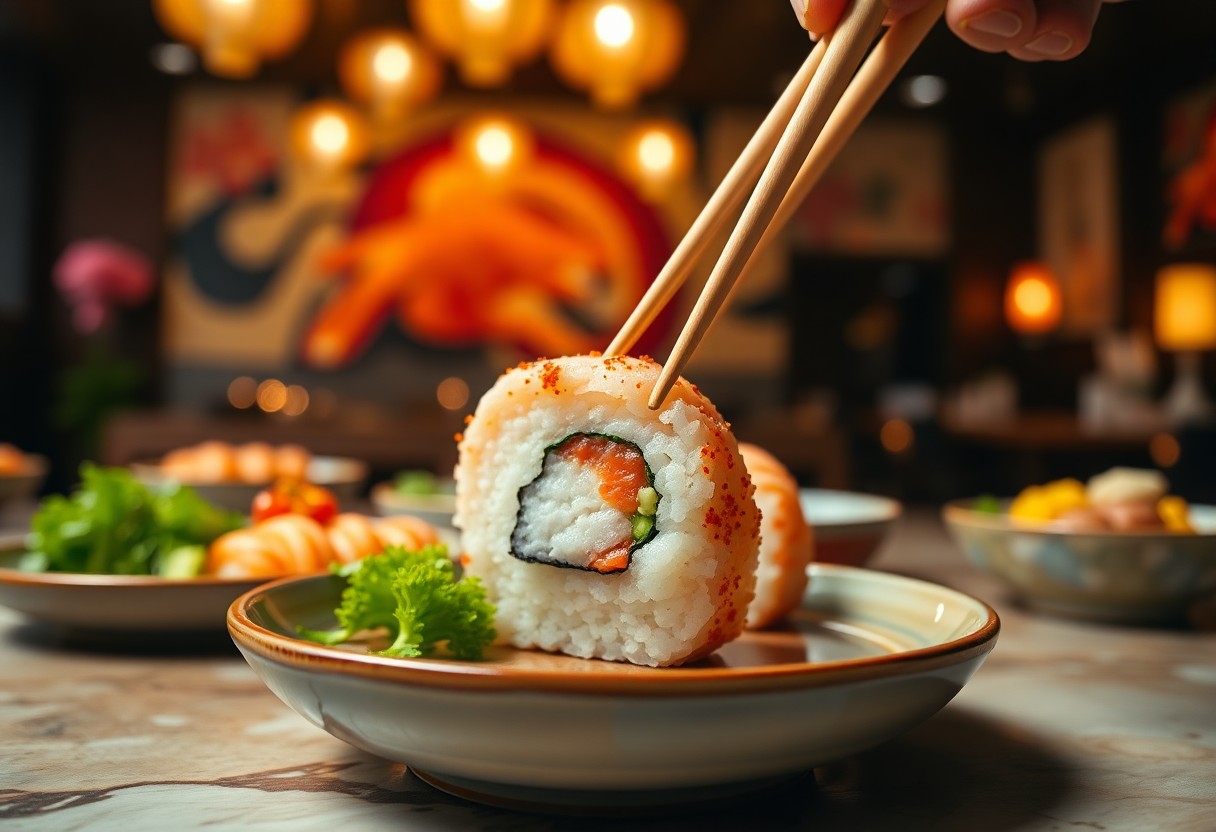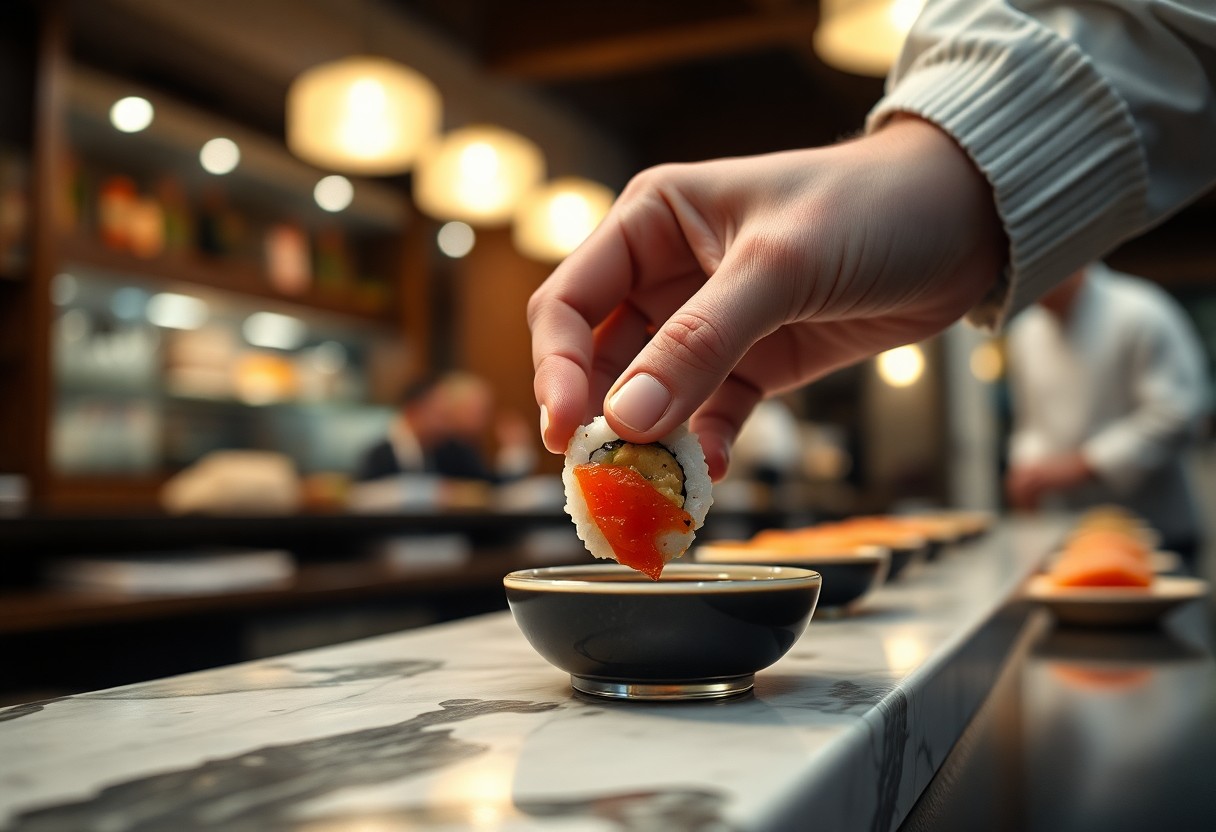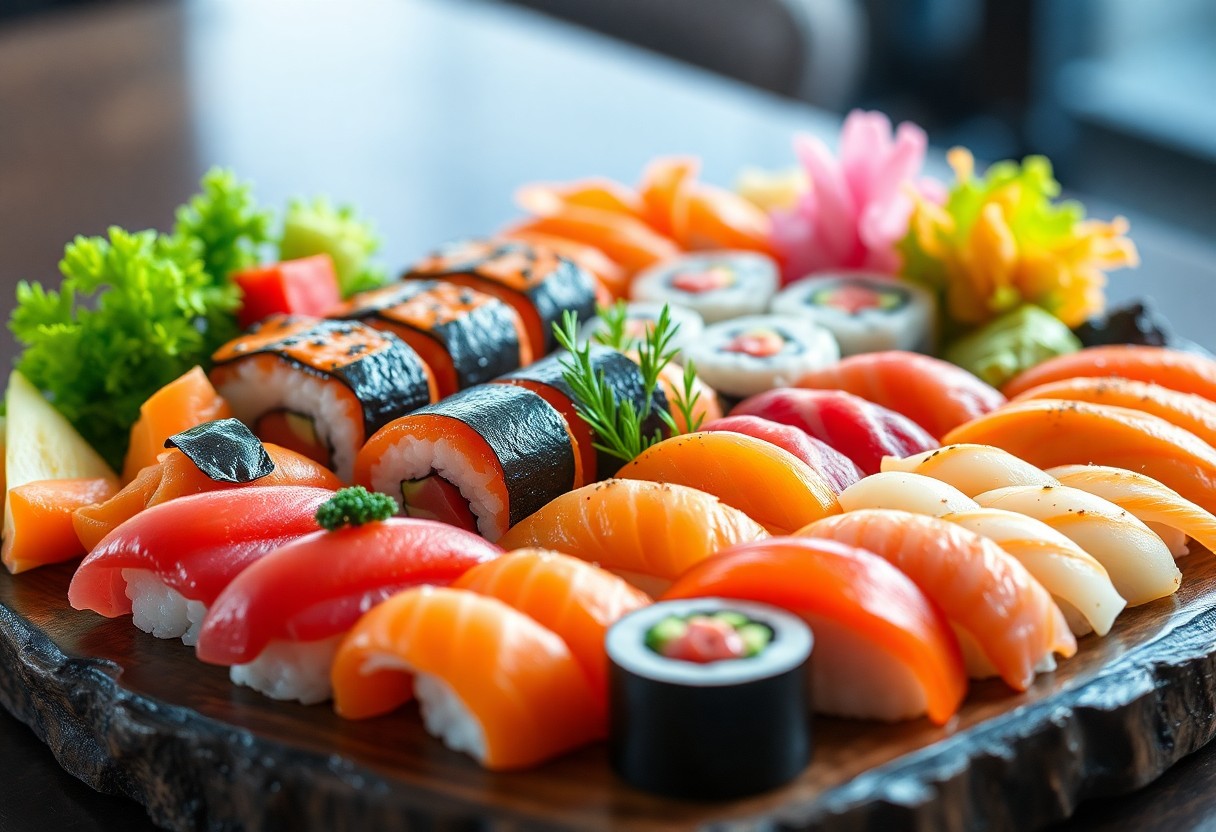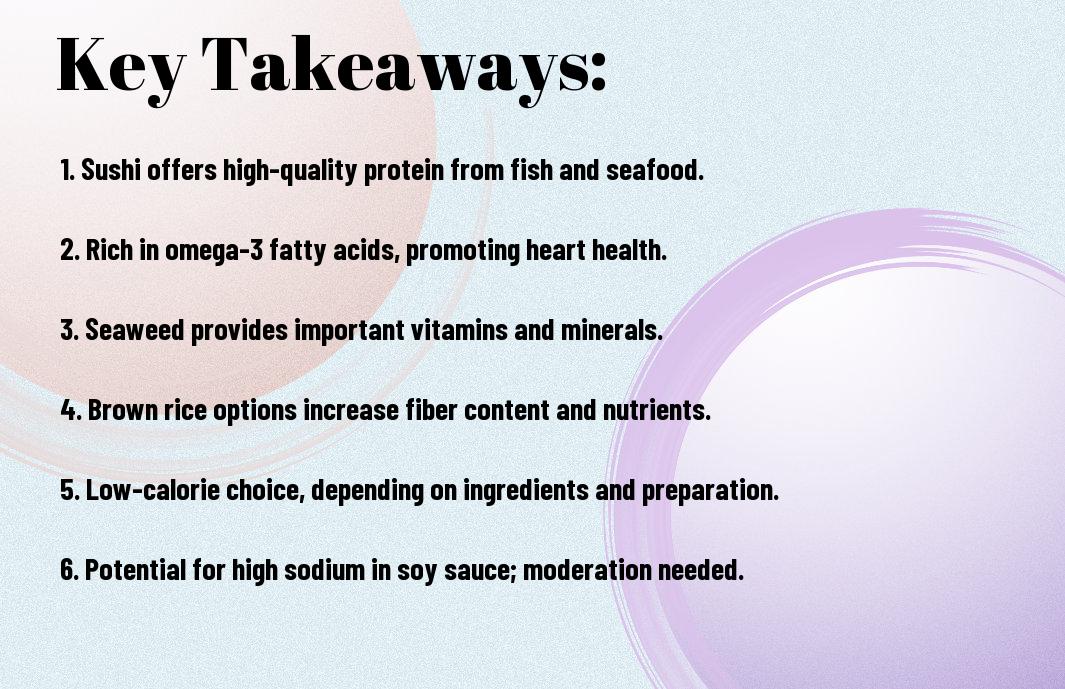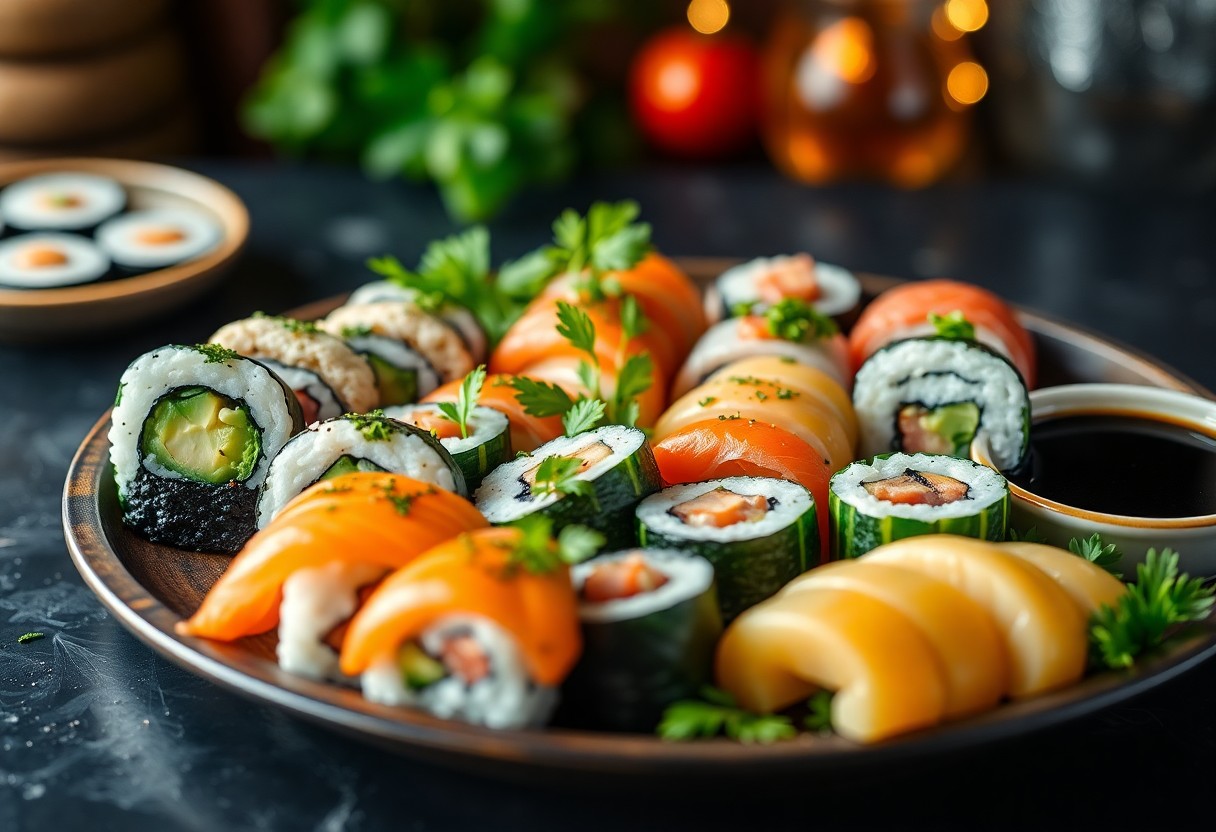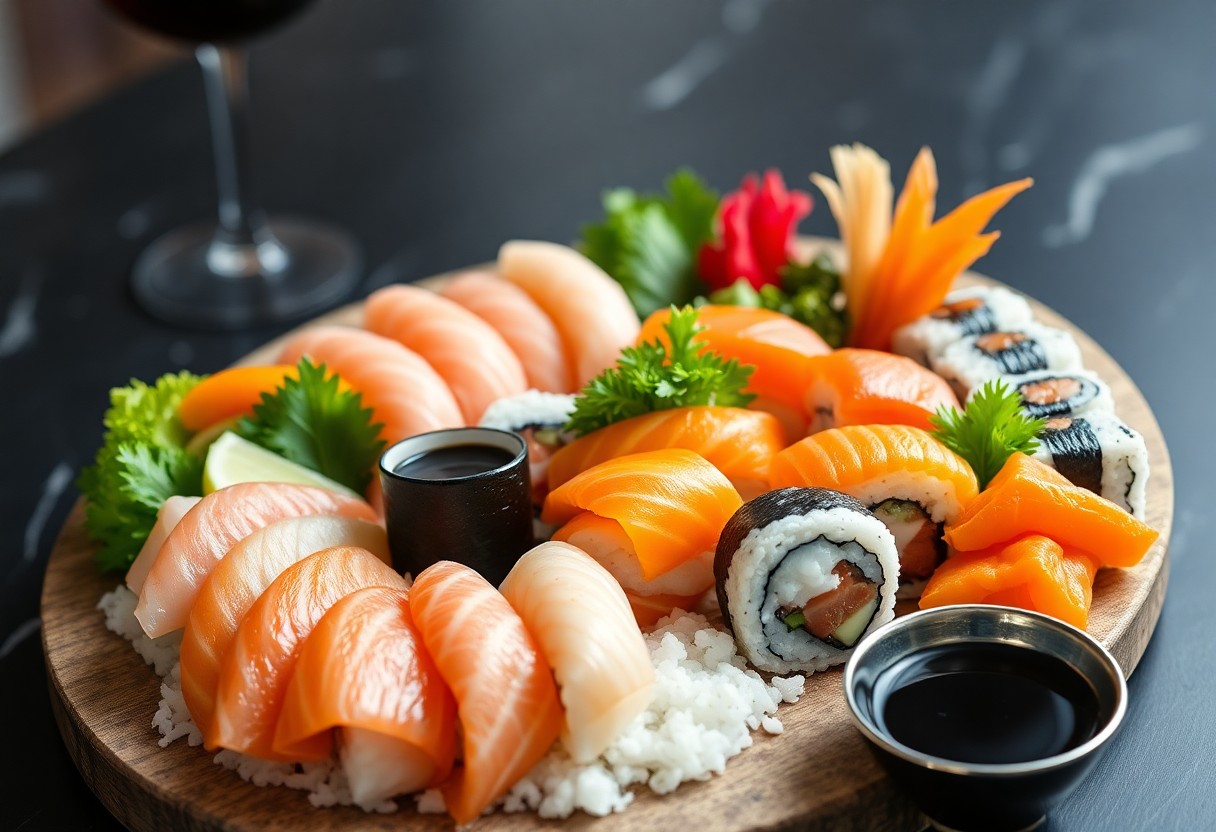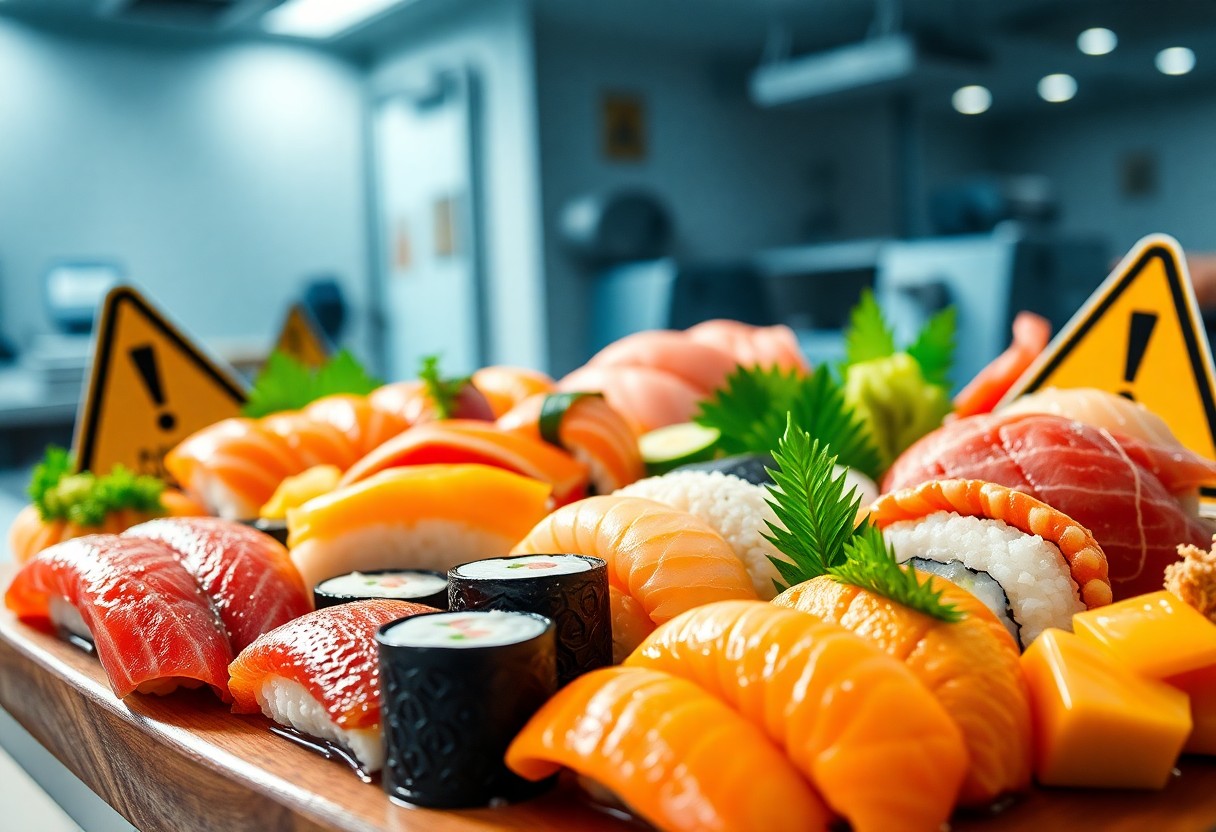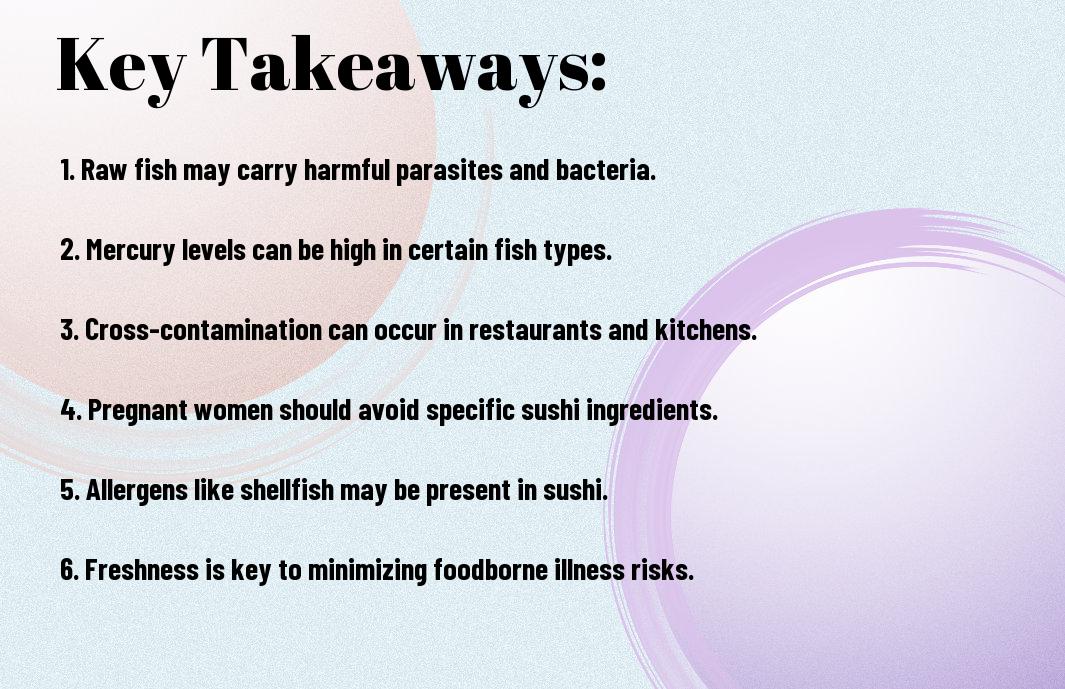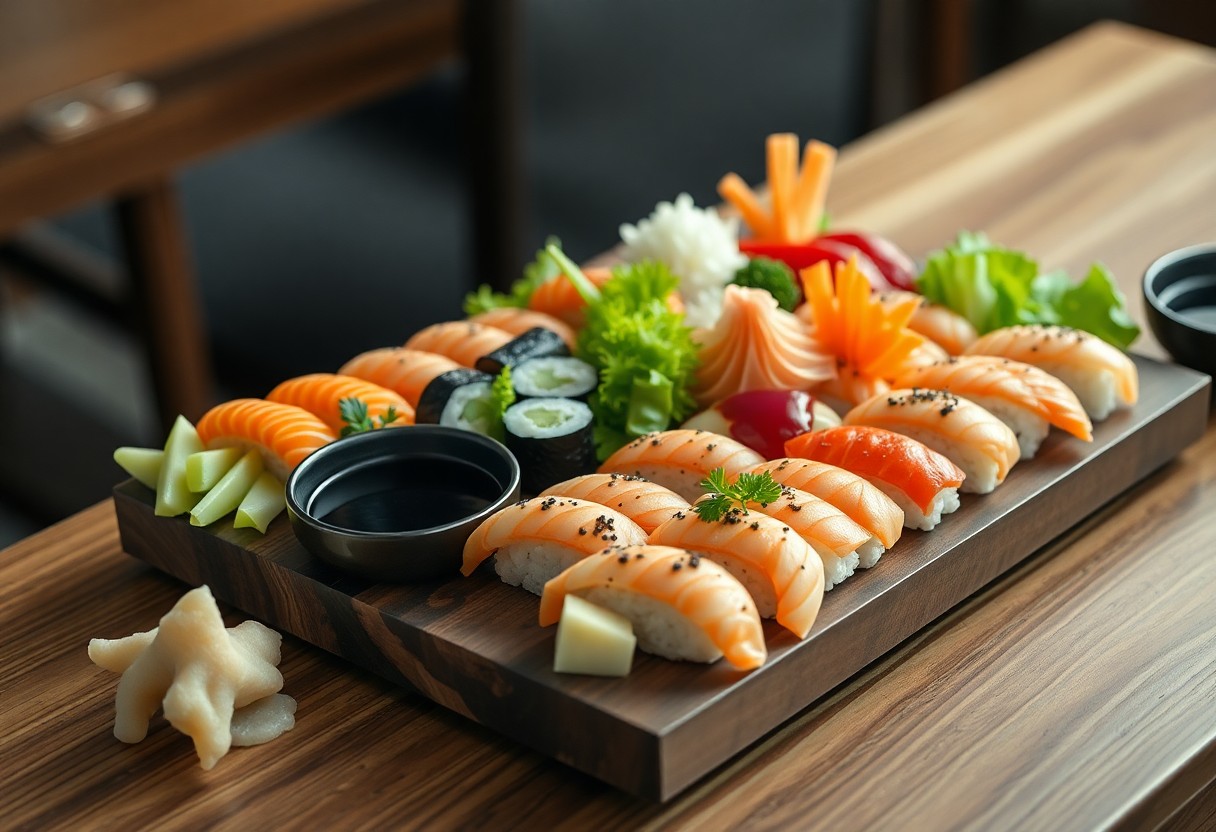There’s a fascinating world of culinary artistry and extravagance waiting for you in luxury sushi. As you examine the most expensive rolls, you’ll discover sushi that transcends traditional boundaries, often featuring exquisite ingredients sourced from around the globe. From edible gold and rare fish to elaborate presentations, these gourmet creations push the limits of flavor and opulence. Join us as we explore unique rolls and the stories behind their staggering price tags, inviting you to indulge in a taste of the extraordinary.
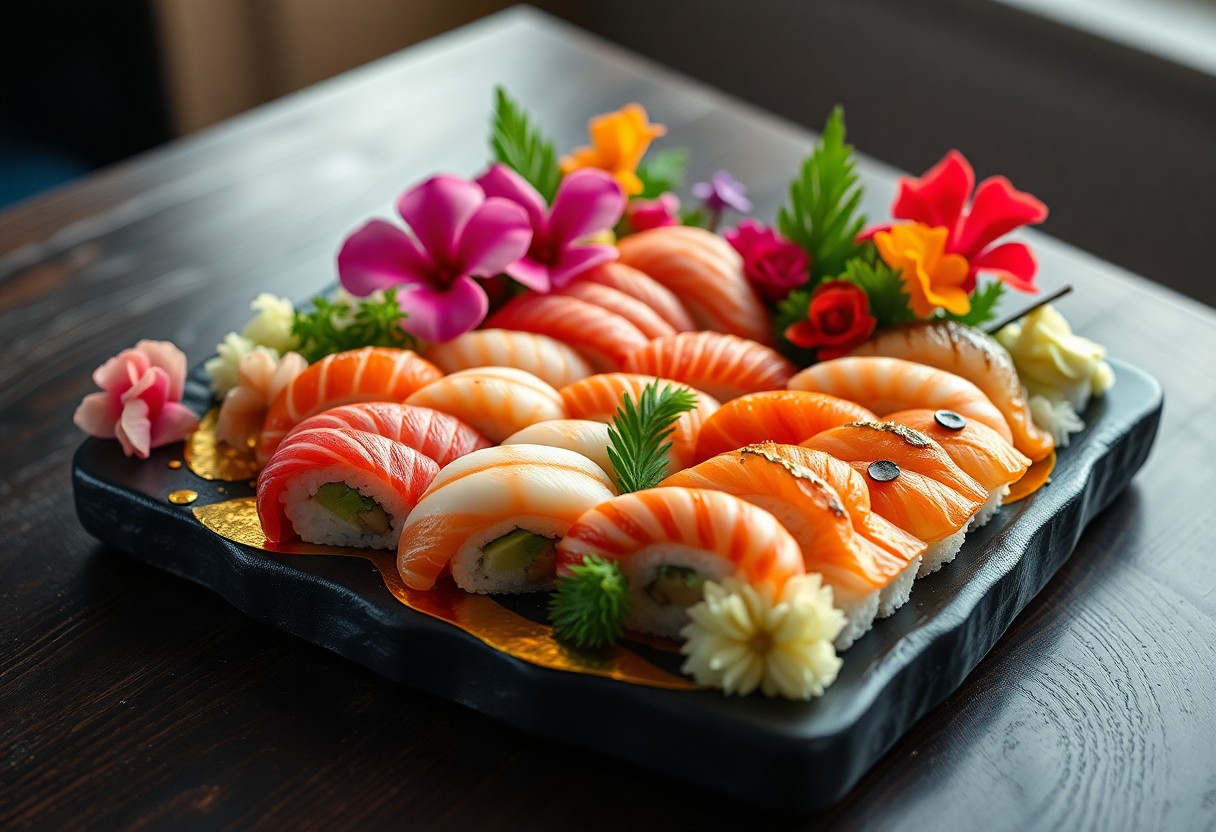
Key Takeaways:
- Exceptional Ingredients: Luxury sushi often features rare and high-quality ingredients, such as Wagyu beef, truffles, and caviar, greatly elevating its price point.
- Artisan Craftsmanship: The preparation of these rolls is usually an art form, with skilled chefs spending years perfecting their craft and creating intricate presentations.
- Exclusive Experiences: Many luxury sushi establishments offer personalized dining experiences, where chefs tailor menus to individual preferences, adding to the overall exclusivity.
- Geographic Significance: Certain sushi rolls may be made with locally sourced ingredients from specific regions, adding to their uniqueness and often their premium cost.
- Market Influences: Various factors, including seasonal availability and global market trends, can impact the pricing of luxury sushi, resulting in fluctuating costs.
The Art of Luxury Sushi
The world of luxury sushi transcends the ordinary, offering you cuisines that meld exquisite flavors, artistry, and a touch of fine dining culture. To truly appreciate this culinary marvel, explore the Most Expensive Sushi in the U.S. (That’s Actually Worth It), showcasing unique rolls that redefine your sushi experience.
Ingredients that Define Luxury
At the heart of luxury sushi lies the quality of its ingredients—think pristine fish like bluefin tuna, delicate uni, and even rare toppings such as gold leaf or truffles. When you savor these exceptional components, you are indulging in a taste that truly sets luxury sushi apart.
The Role of Sushi Chefs
At the pinnacle of luxury sushi dining are the skilled chefs, whose precision and artistry breathe life into each dish. You benefit from their years of training, attention to detail, and deep respect for tradition, allowing you to enjoy expertly crafted flavors and textures in every bite.
That expertise is what elevates your dining experience; sushi chefs not only curate the finest ingredients but also mindfully prepare each roll, showcasing their creativity while keeping the integrity of Japanese culinary traditions intact. By choosing luxury sushi, you engage in a culinary journey guided by these masters, ensuring that each roll delivers unparalleled satisfaction.
Top Luxury Sushi Rolls Around the World
There’s a whole new level of culinary experience waiting for you in the world of luxury sushi rolls. These indulgent creations elevate simple sushi to extravagant art forms, showcasing ingredients that are not only exquisite but also rare, often sourced from across the globe. As you begin on this gastronomic journey, you’ll discover several luxurious options that redefine what sushi means and tantalize your palate like never before.
The Fortress Stilt Fisherman Indulgence
With a price tag to match its prestige, The Fortress Stilt Fisherman Indulgence is a show-stopping sushi roll that will leave you in awe. This unique creation is adorned with an array of luxurious ingredients, including caviar, mango, and a touch of gold leaf, further elevating your sushi experience. Served on a wooden platter next to a sparkling champagne sauce, it is a feast for both your eyes and taste buds.
The Sushi from Masa
Sushi from Masa is not just a meal; it’s an immersion into the art of sushi making. Located in New York City, this Michelin-starred restaurant offers a multi-course omakase experience that showcases the freshest seasonal fish, expertly prepared by Chef Masa Takayama. You can expect an intimate dining experience where every piece of sushi is crafted with precision and served to you at the perfect temperature, highlighting the ingredients’ true flavors.
Also, the attention to detail at Masa extends beyond the food to the ambiance, with a serene atmosphere designed to enhance your meal. Each bite you take is a testament to the chef’s dedication to perfection, blending traditional techniques with contemporary touches. Dining here is about savoring the moment, offering you a unique opportunity to experience the perfect harmony of taste and artistry.
The Cultural Significance of Luxury Sushi
To truly appreciate luxury sushi, you must understand its cultural significance within Japanese society. It embodies not just culinary artistry but also a deep-rooted tradition that highlights the importance of seasonality, craftsmanship, and respect for ingredients. Luxury sushi serves as a gateway to explore the intricate relationship between food, nature, and the rituals surrounding dining experiences, reflecting values that have been passed down through generations.
Celebrations and Traditions
To partake in luxury sushi is often to engage in age-old celebrations and traditions. Special occasions such as weddings, anniversaries, and festivals frequently feature exquisite sushi, elevating the dining experience as a form of honoring significant life events. Serving and enjoying luxury sushi with loved ones represents unity and shared joy, making each bite a part of the larger cultural tapestry.
Sushi as a Status Symbol
Luxury sushi is more than just an indulgence; it has become synonymous with status and exclusivity.
Cultural perceptions of luxury sushi as a status symbol stem from its association with premium ingredients and skilled craftsmanship. When you choose to indulge in high-end sushi, such as those made with rare fish or artisanal techniques, you not only enjoy a remarkable meal but also communicate your appreciation for exclusivity and refinement. This connection with luxury is reinforced by high-profile chefs and upscale dining venues, making luxury sushi a definitive marker of sophistication and social standing.
The Future of Luxury Sushi
Once again, the world of luxury sushi is poised for transformation, as chefs and restaurateurs adapt to evolving consumer preferences and food trends. As you explore the landscape of high-end sushi, you’ll find creativity reaching new heights, where innovation and tradition blend seamlessly. Not only will you encounter extravagant flavors, but you’ll also discover a renewed focus on sustainability, sourcing, and unique presentations that elevate your dining experience to new levels.
Trends in High-End Sushi
Across the globe, high-end sushi establishments are embracing fusion cuisines and diverse ingredients, creating unique rolls that excite your palate. As culinary boundaries blur, you may find unexpected combinations and artistry in presentation that go beyond traditional sushi. You’ll also witness a surge in omakase dining experiences that promise personalized flavors tailored to your tastes.
Sustainability and Sourcing
Along with changing culinary trends, sustainability has become a priority for upscale sushi restaurants. You’ll notice more establishments striving to source seafood responsibly, ensuring that your sushi choices support environmentally friendly practices.
Due to increasing awareness about overfishing and environmental degradation, many luxury sushi chefs are now prioritizing sustainable sourcing. By choosing local, seasonal fish and certified seafood, they not only enhance the freshness and quality of your meal, but also contribute to the preservation of marine ecosystems. As a diner, your choices can impact the future of the industry, encouraging the proliferation of practices that promote responsible fishing and support local communities. So when you indulge in luxury sushi, you’re not only treating yourself—you’re also supporting a more sustainable culinary future.
Pairing Fine Beverages with Luxury Sushi
Now that you’ve discovered the exquisite world of luxury sushi, it’s time to elevate your dining experience by pairing these gastronomic treasures with fine beverages. Selecting the perfect drink can enhance the nuances of your sushi rolls, bringing out their delicate flavors and textures. From traditional options like sake to innovative pairings such as wines, you’ll find that the right beverage can truly transform your meal into an unforgettable culinary journey.
Sake and Its Importance
The importance of sake in Japanese cuisine cannot be overstated. This traditional rice wine is specifically crafted to complement sushi, enhancing its flavors without overpowering them. When you choose a premium sake, its nuanced taste profiles—ranging from fruity to umami—can create a harmonious balance with your sushi, making every bite more satisfying and enjoyable.
Wine and Sushi: An Unexpected Harmony
For those willing to explore outside of tradition, pairing wine with sushi can lead to delightful discoveries. The diverse flavor profiles found in various wines can provide interesting contrasts and complements to the delicate tastes of sushi, enriching your culinary experience.
Even though many people associate sake with sushi, wine pairing offers an exciting alternative, allowing you to experiment with combinations that might surprise you. For instance, a crisp Sauvignon Blanc can accentuate the bright flavors of citrusy rolls, while a light Pinot Noir might enhance richer fish like salmon. By exploring different wine selections, you create a dynamic dining experience that celebrates both the art of sushi and the world of fine wines.
Tips for Experiencing Luxury Sushi
Unlike your typical sushi experience, indulging in luxury sushi calls for a thoughtful approach. Consider these tips to enhance your experience:
- Be open to trying new ingredients.
- Compliment your meal with premium beverages.
- Engage with the chef for insights on each dish.
- Dress appropriately to match the restaurant’s ambiance.
This will elevate your overall experience and make it truly unforgettable.
Choosing the Right Restaurant
For an authentic luxury sushi experience, selecting the right restaurant is paramount. Look for establishments with well-reputed chefs and a focus on high-quality ingredients. Research their accolades and read reviews to ensure the sushi is prepared with precision and care. Attending a restaurant known for its exclusive offerings allows you to truly indulge in the finest sushi delicacies.
Understanding the Menu
Tips for navigating a luxury sushi menu include being aware of unique ingredients and preparation styles. You should familiarize yourself with terms like nigiri, sashimi, and omakase, as these often define the meal’s structure. Understanding seasonal offerings can also enhance your dining experience.
Also, take the time to inquire about the sourcing of ingredients, as this knowledge can deepen your appreciation for the dish’s quality and craftsmanship. Many luxury sushi restaurants pride themselves on sourcing fresh fish directly from local markets or international purveyors, which can significantly elevate your dining experience. By engaging with the menu and the staff, you’ll unlock a richer understanding of how each piece is crafted and served.
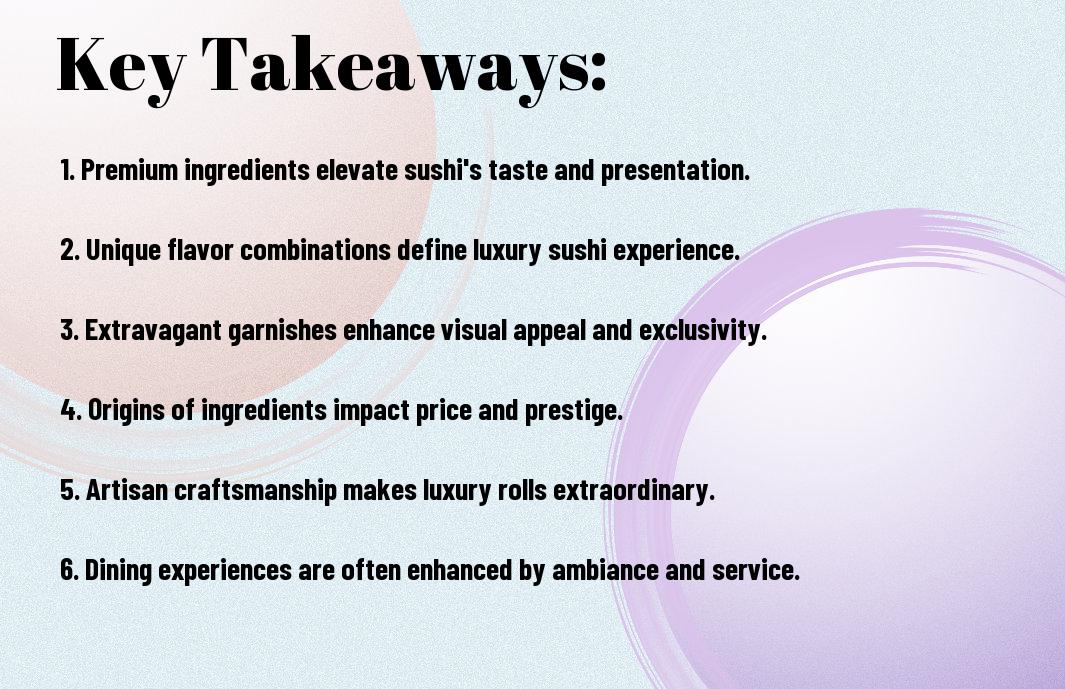
Final Words
The world of luxury sushi offers a unique culinary experience that tantalizes the senses and elevates traditional dining into an art form. By exploring the intricacies and costs associated with the most expensive rolls, you gain insight into not just the ingredients but also the craftsmanship that transforms each dish into a masterpiece. Whether you’re aspiring to indulge in this opulent cuisine or simply appreciate its nuances, your journey through luxury sushi can enhance your appreciation for fine dining and cultural sophistication.
Q: What are some of the key ingredients that make luxury sushi so expensive?
A: Luxury sushi often incorporates rare and high-quality ingredients, which are significant contributors to its elevated price. For instance, premium cuts of fish such as Bluefin tuna, which can be auctioned for thousands of dollars, are frequently used. Additionally, luxury sushi may feature ingredients like gold leaf, rare caviar, or specially aged soy sauce. These unique elements not only enhance the flavor profile but also elevate the overall dining experience, making the rolls a true gourmet delicacy.
Q: What is the inspiration behind creating the world’s most expensive sushi rolls?
A: The inspiration often stems from a combination of culinary artistry, cultural significance, and the desire to push culinary boundaries. Chefs may draw from traditional sushi-making techniques, infusing them with modern twists, unusual ingredients, or extravagant embellishments. This combination of heritage and innovation leads to the creation of sushi rolls that reflect the chef’s personal philosophy and creativity, ultimately producing dishes that are meant not just to be eaten but to be experienced.
Q: How does the presentation of luxury sushi enhance its appeal?
A: Presentation plays a vital role in the appeal of luxury sushi. High-end establishments take great care in the visual arrangement of dishes, ensuring that each roll is a feast for the eyes. This might include artistic garnishes, vibrant colors from a variety of fresh ingredients, and even unique plating techniques that elevate the overall dining experience. A beautifully presented dish can evoke emotions and excitement, making the indulgence of luxury sushi not just about taste but also about artistry and aesthetic pleasure.


